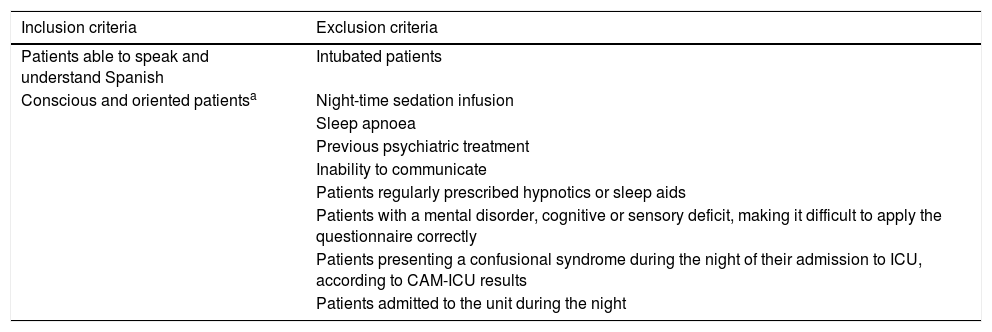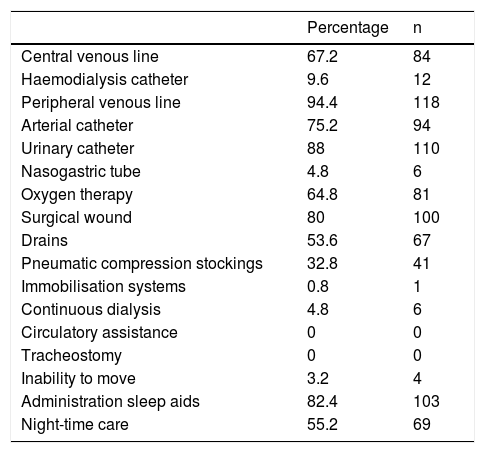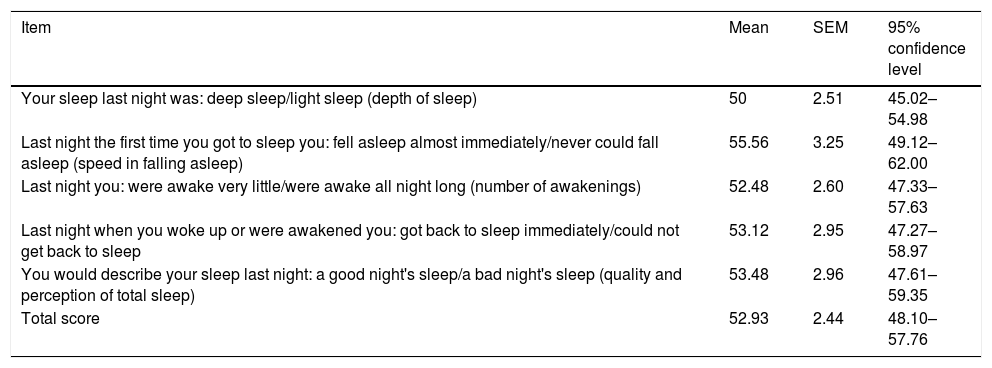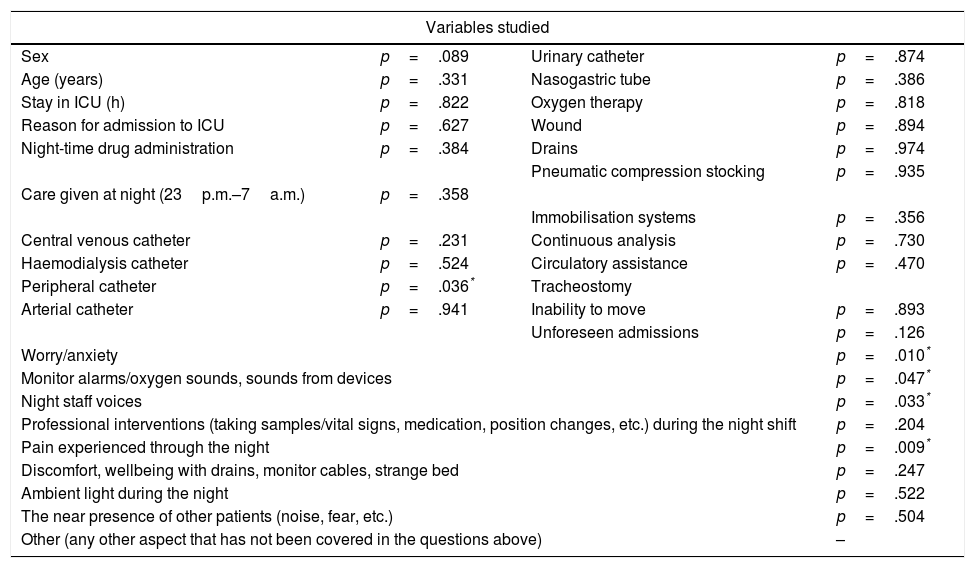Patients’ sleep can be disturbed during their stay in an Intensive Care Unit. Many factors can explain this disturbance, both within the ICU environment and caused by patients’ illnesses. There is evidence that patients’ sleep can be improved within ICUs. The aim of this study is to describe patients’ perceptions of a night's sleep and develop a care plan that promotes a night's sleep.
MethodologyA prospective descriptive study was performed in the ICU of a training hospital. The sleep of 125 patients was explored. Sociodemographic and clinical variables were collected from patients’ medical records. The 5-item Richards–Campbell Sleep Questionnaire was utilised to assess patients’ perception of a night's sleep. In addition, an ad-hoc 9-item questionnaire was developed which included factors that can affect sleep according to the literature. Patients had to grade the level of interference of those factors with their night's sleep.
ResultsThe sleep of patients in our Intensive Care Unit was moderately deep, with light arousals and ease in falling sleep again. The average value on the Richards–Campbell Sleep Questionnaire was 52.92mm. The factors that significantly interfered with sleep were: pain (p=.009), worries/anxiety (p=.01), staff voices (p=.033), alarm/medical devices sounds (p=.047) and peripheral intravenous lines (p=.036).
ConclusionsOur patients’ perception of a night's sleep in the ICU was fair. Optimising pain management, answering questions or worries, minimising background noise and voices have the potential to improve sleep quality.
El descanso nocturno de los pacientes ingresados en una Unidad de Cuidados Intensivos puede sufrir interrupciones debido a los múltiples factores presentes en este tipo de unidades, además de las ligadas al propio proceso de enfermedad. Hay evidencia de que el sueño en estas unidades puede mejorar.
El objetivo de este trabajo fue describir las percepciones de los pacientes con relación al sueño nocturno.
MetodologíaEstudio descriptivo prospectivo en una Unidad de Cuidados Intensivos de un hospital universitario de nivel terciario. Se estudió el sueño en 125 pacientes. Se recogieron variables sociodemográficas y datos de la historia clínica. Se utilizó el cuestionario del sueño de Richards-Campbell de 5ítems para valorar la percepción del sueño. Además, se añadió un cuestionario con 9 preguntas sobre factores descritos en la literatura que pueden influir en el sueño para que el paciente graduase la influencia de los mismos.
ResultadosEl patrón de sueño/descanso de los pacientes ingresados en nuestra unidad se caracterizó por ser un sueño de profundidad media, con ligeros despertares, y con facilidad para conciliarlo. El valor medio de la escala de sueño de Richards-Campbell fue de 52,92mm. Los factores que significativamente influyeron en el sueño fueron: el dolor (p=0,009), la preocupación/nerviosismo (p=0,01), las voces del personal (p=0,033), los ruidos de los monitores/alarmas/aparatos (p=0,047) y la vía periférica (p=0,036).
ConclusiónLa percepción del sueño nocturno de nuestros pacientes fue regular. Optimizar la pauta de analgesia, aclarar cualquier duda o preocupación, minimizar el ruido ambiental y el generado por las voces del personal, podría mejorar la calidad del sueño.
Article
Diríjase al área de socios de la web de la SEEIUC, (https://seeiuc.org/mi-cuenta/iniciar-sesion/) y autentifíquese.















